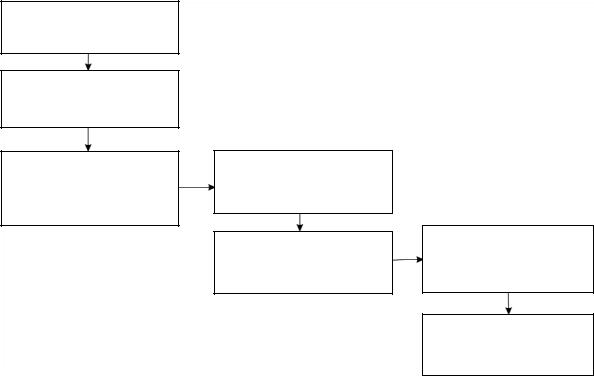
Russian Journal of Building Construction and Architecture
.pdfRUSSIAN JOURNAL
OF BUILDING
CONSTRUCTION AND ARCHITECTURE
1

The journal is indexed/abstracted in:
Web of Science Core Collection
(Emerging Sources Citation
Index)
(Thomson Reuters), USA
Ulrich's Periodicals Directory
(Bowker), USA,
DOAJ
(Lund University), Sweden,
Academic Search Complete
(EBSCO), USA,
SOCOLAR
(China Educational Publications Import and Export Corporation –– CEPIEC), China,
Google Scholar
(Google), USA,
E-Library
(ООО «РУНЭБ), Russia,
J-Gate
(Informatics Ltd), India
2
ISSN 2542-0526
RUSSIAN JOURNAL
OF BUILDING
CONSTRUCTION AND ARCHITECTURE
N 3 (39)
BUILDING STRUCTURES, BUILDINGS AND CONSTRUCTIONS
BASES AND FOUNDATIONS, UNDERGROUND STRUCTURES
HEAT AND GAS SUPPLY, VENTILATION, AIR CONDITIONING, GAS SUPPLY AND ILLUMINATION
WATER SUPPLY, SEWERAGE, BUILDING CONSTRUCTION OF WATER RESOURCES PROTECTION
BUILDING MATERIALS AND PRODUCTS
TECHNOLOGY AND ORGANIZATION OF CONSTRUCTION
DESIGNING AND CONSTRUCTION OF ROADS, SUBWAYS, AIRFIELDS, BRIDGES AND TRANSPORT TUNNELS
BUILDING MECHANICS
ENVIRONMENTAL SAFETY OF CONSTRUCTION AND MUNICIPAL SERVICES
THEORY AND HISTORY OF ARCHITECTURE, RESTORATION AND RECONSTRUCTION OF HISTORICAL
AND ARCHITECTURAL HERITAGE
ARCHITECTURE OF BUILDINGS AND STRUCTURES. CREATIVE CONCEPTIONS OF ARCHITECTURAL ACTIVITY
CITY PLANNING, PLANNING OF VILLAGE SETTLEMENTS
FIRE AND INDUSTRIAL SAFETY (CIVIL ENGINEERING)
Voronezh 2018
3

Russian Journal
of Building Construction and Architecture
Periodical scientific edition
Published since 2009 |
Comes out 4 times per annum |
Founder and publisher: Federal State Education Budget Institution of Higher Professional Education «Voronezh State Technical University».
The articles are reviewed and processed with the program ANTIPLAGIARISM. This publication cannot be reprinted without the prior permission of the publisher, references are obligatory.
Number of the certificate of registration of the media ПИ № ФС 77-67855
Issued by the Federal Service for Supervision of Communications, Information Technology, and Mass Media (Roskomnadzor)
Price is subject to change
EDITORIAL COUNCIL
The Head of the Council: Kolodyazhny S. A., D. Sc. in Engineering, rector (Voronezh State Technical University)
EDITORIAL BOARD
Editor-in-Chief: Melkumov V. N., D. Sc. in Engineering, Prof.
(Voronezh State Technical University)
Members:
Boldyrev А.М., Corresponding Member of the Russian Academy of Architecture and Engineering Science, D.Sc. in Engineering, Prof., Voronezh State Technical University, Russia
Bondarev B. А., D. Sc. in Engineering, Prof., Lipetsk State Technical University, Russia
Gagarin V. G., Corresponding Member of RAABS, Moscow State University of Civil Engineering, Russia
Gelfond А. L., Corresponding Member of the Russian Academy of Architecture and Construction Science, D. Sc. in Architecture, Nizhniy Novgorod State University of Architecture and Construction, Russia
Enin A. Ye., PhD in Architecture, Prof., Voronezh State Technical University, Russia
Karpenko N. I., Academician of RAABS, Research Institute of Building Physics (NIISF RAABS), Russia
Kirsanov М.N., D.Sc. in Physics and Mathemat-
ics, Professor (National Research University “Moscow Power Engineering Institute”)
Kobelev N. S., D. Sc. in Engineering, Prof., Southwest State University, Kursk, Russia
Kolchunov V. I., Academician of RAABS, Southwest State University, Kursk, Russia
Ledenyev V. I., D. Sc. in Engineering, Prof., Tambov State Technical University, Russia
Lyahovich L. S., Academician of RAABS, Tomsk State University of Architecture and Building, Russia
Mailyan L. R., D. Sc. in Engineering, Prof., Don State Technical University, Rostov, Russia
Panibratov Yu. P., Academician of RAABS, Saint Petersburg State University of Architecture and Civil Engineering, Russia
Podolsky Vl. P., D. Sc. in Engineering, Prof., Voronezh State Technical University, Russia (Dep. of the Editor-in-Chief)
Slavinskaya G.V., D. Sc. in Chemistry, Prof, Voronezh State Technical University, Russia
Suleymanov А. М., D. Sc. in Engineering, Prof., Kazan State University of Architecture and Engineering, Russia
Fyedorov V. S., Academician of RAABS, Moscow State University of Railway Engineering, Russia
Fedosov S. V., Academician of RAABS, Ivanovo State Polytechnic University, Russia
Chernyshov Ye. M., Academician of RAABS, Voronezh State Technical University, Russia
Shapiro D. M., D. Sc. in Engineering, Prof., Voronezh State Technical University, Russia
Shubenkov М. V., Academician of the Russian Academy of Architecture and Construction Science, D. Sc. in Architecture, Prof., Моscow Institute of Architecture (State Academy), Russia Asanowicz Alexander, Prof., Dr. of Sn., Technical University of Bialystok, Poland
Figovsky Oleg L., Prof., Dr. of Sn., Member of EAS, Israel Korsun V. I., D. Sc. in Engineering, Prof., The Donbas National Academy of Civil Engineering and Architecture, Ukraine Nguyen Van Thinh, Prof., Dr. of Sn., Hanoi University of Architecture, Vietnam
Editor: Kotlyarova E. S. |
Translator: Litvinova O. A. |
THE ADDRESS of EDITORIAL AND THE PUBLISHER OFFICE: 84 20-letiya Oktyabrya str., Voronezh, 394006, Russian Federation Tel./fax: (473)2-774-006; e-mail: vestnik_vgasu@mail.ru
Publication date 10.07.2018. Format 60×84 1/8. Conventional printed sheets 12.7. Circulation 500 copies. Order 185.
Published in Printing Office of Voronezh State Technical University 84 20-letiya Oktyabrya str., Voronezh, 394006, Russian Federation
ISSN 2542-0526 |
© Voronezh State Technical |
|
University, 2018 |
4
CONTENTS |
|
BUILDING STRUCTURES, BUILDINGS AND CONSTRUCTIONS ................................................... |
6 |
Vasil'kin A. A. |
|
Integration of Structural and Parametric Optimizationat the Stage |
|
of Designing Steel Constructions .............................................................................................. |
6 |
HEAT AND GAS SUPPLY, VENTILATION, |
|
AIR CONDITIONING, GAS SUPPLY AND ILLUMINATION ........................................................ |
15 |
Moqhadasi Mohammad Mahdi, Heidari Shahin, Shahcheraghi Azadeh |
|
Generation and Validation of Typical Meteorological Year (TMY) to Analysis |
|
the Psychometric Chart to Evaluate the Thermal Comfort Conditions in Buildings |
|
(Case Study: Kermanshah, Iran) .............................................................................................. |
15 |
WATER SUPPLY, SEWERAGE, BUILDING CONSTRUCTION |
|
OF WATER RESOURCES PROTECTION .................................................................................... |
32 |
Orlov V. A., Shcherbakov V. I., Dezhina I. S. |
|
Investigation of Hydrophobic Characteristics and Transferring Capacity |
|
of Protective Coatings Used for Trenchless Pipeline Renovation ........................................... |
32 |
BUILDING MATERIALS AND PRODUCTS .................................................................................. |
43 |
Kukina O. B., Glazkov S. S., Barabash D. E. |
|
Organo-mineral Modifier of Clay Soils Strengthened by Cement........................................... |
43 |
Shabaev S. N. |
|
Factors Influencing the Efficiency of the Process of Modification |
|
of Oil Bitumens with Rubber Crumb ....................................................................................... |
54 |
Dehghanpour Heydar, Yılmaz Kemalettin |
|
Mechanical and Impact Behavior on Recycled Steel |
|
Fiber Reinforced Cementitious Mortars................................................................................... |
67 |
TECHNOLOGY AND ORGANIZATION OF CONSTRUCTION ....................................................... |
85 |
Mukhametzyanov Z. R., Razyapov R. V. |
|
Mechanism of Development of Organizational Solutions Based |
|
on a Technological Interaction Between Construction Works and Processes ......................... |
85 |
DESIGNING AND CONSTRUCTION OF ROADS, SUBWAYS, |
|
AIRFIELDS, BRIDGES AND TRANSPORT TUNNELS .................................................................. |
93 |
Yashnov А. N., Polyakov S. Yu. |
|
Experimental Determination of Stress-strain State of Asphalt Pavement |
|
on Metal Bridges............................................................................................................................... |
93 |
INSTRUCTIONS TO AUTHORS ................................................................................................. |
107 |
5

BUILDING STRUCTURES,BUILDINGS AND CONSTRUCTIONS
UDC 624.014.2
A. A. Vasil'kin1
INTEGRATION OF STRUCTURAL AND PARAMETRIC OPTIMIZATION AT THE STAGE OF DESIGNING STEEL CONSTRUCTIONS
National Research University «Moscow State University of Civil Engineering» Russia, Moscow, tel.: +7-917-501-56-29, e-mail: vergiz@mail.ru
1PhD in Engineering, Assoc. Prof. of the Dept. of Steel Construction
Statement of the problem. The more design solutions in the design phase of the design are synthesized by the engineer, the more likely it is that the final version will be the most efficient and economical one. However, in modern market conditions, the designer does not have the necessary time to develop, analyze and compare any significant number of options. To solve this problem, it is crucial to use high computational capabilities of modern software.
Results and conclusions. To implement automated search of design solutions, it is proposed to develop a computer tool, the application of which will significantly increase the productivity of the designer and reduce the complexity of designing. The methods of structural and parametric optimization have been adopted as the basis of a computational tool. The efficiency of their use in the synthesis of design solutions is shown, schemes are designed that illustrate and explain the introduction of structural optimization in the traditional design of steel structures.
Keywords: optimal design, parametric optimization, search for design solutions.
Introduction. One of the ways to develop systems of automized design is to optimize search for design solutions [2]. Traditionally, designing cannot be made automized as searching and making design decisions involves a great deal of creativity as well as experience and intuition from an engineering designer [5]. Formally accepted procedures that can be implemented by means of information technologies allows one to deal with a range of tasks automatically [4].
These tasks are searching for a set of varied parameters of design solutions that meet the specified criteria and restrictions [9]. One of the ways of searching for the parameters in a space of possible solutions which is widely used in designing is nonlinear programming [20, 21, 22].
© Vasil'kin A. A., 2018
6
Issue № 3 (39), 2018 |
ISSN 2542-0526 |
However, in practical constrctuon involving discrete varied parameters and complex purpose functions, nonlinear programming is uncommon as significant knowledge of the optimization theory is required.
The methodological task of searching for design solutions for construction objects is regarded as a set of two major tasks: synthesis of the structure of a designing object and that of the parameters of a construction object, i.e. choosing numerical values of the parameters of variable parameters of the elements of a structure.
In order to obtain an effective solution, this methodology should be based on a wide use of the opportunities offered by modern information technology and optimization methods [24]. The metholodology relies on imitation models of a designing object, the use of the decomposition principles of complex models and organization of a system process of designing. Search programming requires that an engineer considers possibly quantitavely different goals of programming and requirements for structures as well as those that cannot be expressed qualitatitvely, architectural expression. Many of these goals and requirements can be contradictory and thus call for decisions to be made.
In order to improve a structure, optimization methods should assist in managing even more complex designing issues enabling synthesis of several options of designing solutions. Considering the opportunities offered by modern software programming, the use of computational methods in structgural and parametric optimization of engineering and architectural design allows a profound analysis and a wider range of structures to be analyzed at the initial stages of design as more design decisions are searched for and made with impacts changing at different points of a structure’s subsequent life cycle. These are addressed using the synthesis of the topology of surfacing structures [11], structural constructions [13], search for the layout of a building [9].
Structural and parametric optimization is a methodology that assists the above, meets engineering interests and guides decision-making in variant design. Structural and parametric optimization is commonly used in machinery [6, 12], aviation [7], the algorithms are developed for construction [16, 17], structural optimization is also known to be employed in search, conceptual design [13]. Nevertheless for complex tasks with a great number of variable parameters, one of which is construction, modern designing tools lack functionality for a wider application of the optimization methods. Most of the optimization algorithms target rather purely engineering problems than the synthesis of construction solutions and search designing [1, 15]. Engineers working with the synthesis of a structure are often constrained by insuffi-
7

Russian Journal of Building Construction and Architecture
cient feedback which impacts decision-making. As a result, this effective and powerful method such as structural and parametric optimization that allows the cost and labour-intensity of designing is not widely employed.
Therefore there have to be studies to improve the availability, use and flexibility of optimization to assist engineers in searching for effective design solutions at the initial stages of designing.
1.Existing studies. Originally a big contribution to the methods of parametric and structural optimization was made by a lot of scholars in this country and abroad [3, 25]. These are studies of numerical optimization [3], use of genetic algorithm [8, 10, 23]. Even though these studies indicate a great potential for structural and parametric optimization for using design, not much attention is paid to the opportunities of interactive use of the optimization methods for addressing the problems and objectives of designing. A lot of computational tools also call for extensive preliminary training and manipulations, long-term setting as well as complex information exchange between different software, which makes them less likely to be used in practice.
These can be addressed by means of information technology supporting search for design solutions where evolutionary principles of multi-purpose parametric optimization with complex purpose functions are implemented [2]. This subsystem includes such functions as search for compromises, diversity of solutions, correction of a designing objective during solution search, visualization and export of results, which enables synthesis of optimal structures during search designing. Integration of these systems using CAD-software in design supported by functional opportunities of existing tools is particularly efficient [18, 19].
2.Structural optimization at the stage of search designing. In this paper there is a description of the use of the methods of structural and parametric optimization as well approaches to their integration into search of designing solutions at the stage of variant designing.
The structure of a designed object is a system describing a set of composite elements and connections between them. A complete set of the elements defining a designed object can be presented as an imitation model of an object. Depending on the stage of designing, levels of detail and development of a designing solution, an imitation model might reflect different characteristics of a designed object [14]. Description of an imitation model can be implemented in a different form, this can be a mathematical dependence, sketch or information (numerical) model.
Using structural synthesis, a rational structure of a designed object can be chosen. Each structure has a set of the parameters that can be accepted as varied or unchangeable. Choice of
8

Issue № 3 (39), 2018 |
ISSN 2542-0526 |
numerical values of a set of varied parameters, e.g., type of steel, section, size of a section, etc. is part of parametric synthesis.
The methodology of search of a structure of a designing object is presented in Fig. 1.
1. Identifying the general
requirements
2. Determining a set of all possible structures
3. Exclusion of the structures that do not meet
the requirements from a list
4.Determining restrictions and criteria of optimality
5.Evaluating optimality of the remaining structures
6. Choosing an optimal structure
7. Parametric synthesis
Fig. 1. Methodology of choosing the structure of a designing object
As the structure is being formed, a designer deals with formally undetermined structural connections and qualitative criteria thus at this stage the original structure is formed considering informal description of a designed object [3].
One of the main principles underlying most of the optimization methods is the use of a model imitating an actual designed object and organization of a design cycle based on it. Automated designing is based on the use of a model as an analysis tool and choice of the parameters as a tool of automated search of solutions. Overall, a system of automated designing might have various tools for forming a structure and choosing the parameters depending on the stage of designing, i.e. current objectives.
For practical use of the methods of structural optimization it is necessary to develop software that can automatically search for an optimal structure of a designed object. It is obvious that these days it is mostly at an engineer’s discretion to make decisions but formalized procedures can be identified that can be presented as an algorithm. Later on, while handling similar tasks,
9

Russian Journal of Building Construction and Architecture
it is expected to make use of CADD, which is due to the development of computational technology and capacity.
The original data for designing an object is a technical building that contains a functional purpose of an object, operational conditions (a construction area, technical impacts), technology of a process for industrial buildings as well as description of an environment where an object is functioning and being designed as a set of unvaried parameters that cannot be changed at an engineer’s discretion. While analyzing a technical task, an engineer specifies the criteria for the synthesis of a designing solution and associated restrictions.
The following stages describe the operation of a software model for the synthesis of the structure of a designed object.
In the developed computational tool a database is created where groups of designing objects (beam structures, industrial buildings, sheet structures, high-rise structures, etc.) and for each group a set of possible structures and elements to be used is specified.
Stage 1. An uploading manager presents a choice of a list of the elements of a designed system from a database.
Stage 2. A user chooses a certain element for their object.
Stage 3. A user specifies thresholds for corresponding variable parameters.
Stage 4. A computational tool uses a specified algorithm to calculate possible values of the varied parameters of the structure considering the restrictions associated with a transportation size, manufacturing options, operating conditions, etc.
At the last stage a user specifies the optimality criterion that is used to choose an optimal solution using all the suggested software options. This criterion is a set of the output functions of the imitation model and corresponding restrictions as numerical or qualitative values that all the indices are to meet. During optimization one of the functions can be accepted as a purpose one. In this case during synthesis it might reach an extremum –– a maximum or minimum.
Stage 5. Then the structure is subsequently changed based on a conceivable number of possible options, for each structure parametric synthesis is performed. The ioptions of the structure can be specified by a user and thus be within a small range or be synthesized using a genetic algorithm.
The examination of the above designing method allows designing of steel structures to be presented as a generalized scheme that is invariant to the designing objects (Fig. 2).
Therefore designing can be viewed as a set of two iteration cycles: formation and change of the structure and selection of the parameters. During parametric synthesis it is assumed
10
